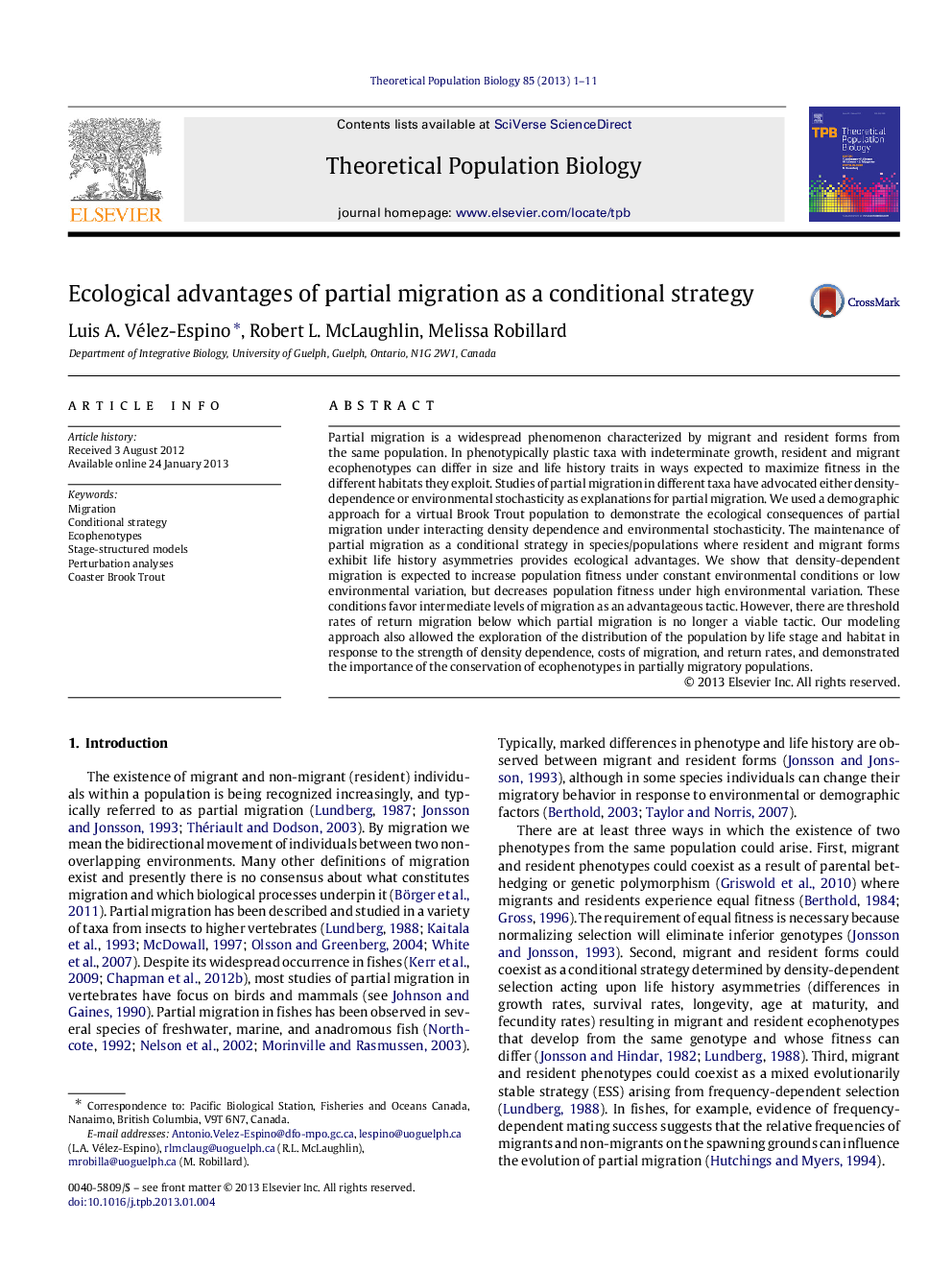| Article ID | Journal | Published Year | Pages | File Type |
|---|---|---|---|---|
| 4502448 | Theoretical Population Biology | 2013 | 11 Pages |
Partial migration is a widespread phenomenon characterized by migrant and resident forms from the same population. In phenotypically plastic taxa with indeterminate growth, resident and migrant ecophenotypes can differ in size and life history traits in ways expected to maximize fitness in the different habitats they exploit. Studies of partial migration in different taxa have advocated either density-dependence or environmental stochasticity as explanations for partial migration. We used a demographic approach for a virtual Brook Trout population to demonstrate the ecological consequences of partial migration under interacting density dependence and environmental stochasticity. The maintenance of partial migration as a conditional strategy in species/populations where resident and migrant forms exhibit life history asymmetries provides ecological advantages. We show that density-dependent migration is expected to increase population fitness under constant environmental conditions or low environmental variation, but decreases population fitness under high environmental variation. These conditions favor intermediate levels of migration as an advantageous tactic. However, there are threshold rates of return migration below which partial migration is no longer a viable tactic. Our modeling approach also allowed the exploration of the distribution of the population by life stage and habitat in response to the strength of density dependence, costs of migration, and return rates, and demonstrated the importance of the conservation of ecophenotypes in partially migratory populations.
► A demographic approach is used to study partial migration as a conditional strategy. ► A fish model is used for phenotypically plastic taxa with indeterminate growth. ► Density-dependent migration increases population fitness in a constant environment. ► DD migration decreases population fitness under high environmental variation. ► These conditions favor intermediate levels of migration as an advantageous tactic.
